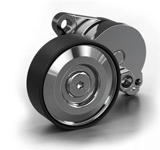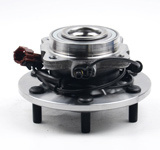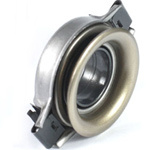The Critical Importance of Timing Belt Tensioners in Engine Longevity
Release time:
Jan 09,2025
The Critical Importance of Timing Belt Tensioners in Engine Longevity
Table of Contents
- Introduction to Timing Belt Tensioners
- What is a Timing Belt Tensioner?
- How Timing Belt Tensioners Work
- The Importance of Timing Belt Tensioners
- Common Signs of Tensioner Failure
- Preventive Maintenance Tips for Timing Belt Tensioners
- Consequences of Ignoring Timing Belt Tensioner Issues
- Frequently Asked Questions
- Conclusion
Introduction to Timing Belt Tensioners
Timing belt tensioners are often overlooked yet play a pivotal role in the functionality and longevity of an engine. These components maintain the correct tension on the timing belt, which is crucial for synchronizing the engine's camshaft and crankshaft. When functioning optimally, timing belt tensioners help ensure that the engine operates smoothly and efficiently. However, when they fail, they can lead to catastrophic engine damage, making it essential for vehicle owners to understand their significance.
What is a Timing Belt Tensioner?
A **timing belt tensioner** is a device that applies pressure to the timing belt, holding it in place while allowing for some degree of flexibility. This flexibility is necessary to accommodate the movement of various engine parts. The timing belt itself is a crucial component that connects the crankshaft to the camshaft; it controls the timing of the engine’s intake and exhaust valves.
Timing belt tensioners are typically spring-loaded or hydraulic, helping to maintain the necessary tension on the timing belt throughout its life. This ensures that the belt does not slip or become loose, which could lead to severe mechanical failures.
How Timing Belt Tensioners Work
Timing belt tensioners work through a simple yet effective mechanism that adapts to the tension needs of the timing belt. Here's how they operate:
1. **Spring Mechanism**: Most tensioners use a spring mechanism that provides consistent tension to the timing belt. When the belt stretches or wears down, the tensioner compensates by adjusting its position.
2. **Hydraulic Tensioners**: Some modern vehicles utilize hydraulic tensioners, which use engine oil pressure to maintain tension. These tensioners automatically adjust as the engine operates, ensuring that the timing belt remains taut irrespective of driving conditions.
3. **Adjustment of Tension**: The tensioner is designed to adjust automatically to maintain optimal tension. This is critical because both too much and too little tension can lead to timing issues.
The Importance of Timing Belt Tensioners
The importance of timing belt tensioners cannot be overstated:
- **Prevention of Slipping**: A properly functioning tensioner prevents the timing belt from slipping, which can disrupt the synchronization between the camshaft and crankshaft, leading to severe engine damage.
- **Enhanced Engine Performance**: With the right amount of tension, the engine can perform at its best, providing optimal power and efficiency.
- **Reduced Wear and Tear**: Timing belt tensioners help reduce wear on the timing belt and other engine components, extending their lifespan and reducing maintenance costs.
- **Cost-Effectiveness**: Addressing tensioner issues early can save vehicle owners from expensive repairs and engine replacements.
Common Signs of Tensioner Failure
Recognizing the signs of a failing timing belt tensioner is crucial for maintaining engine health. Here are some common indicators:
1. **Unusual Noises**: If you hear a rattling or squeaking noise coming from the engine, it may be a sign that the tensioner is failing.
2. **Belt Wear**: If you notice significant wear on your timing belt, it could be due to inadequate tension from the tensioner.
3. **Engine Misfires**: A slipping timing belt can lead to misfires, which can impact engine performance.
4. **Check Engine Light**: If your vehicle's check engine light illuminates, it may indicate a problem with the timing belt system, including the tensioner.
5. **Oil Leaks**: In some cases, hydraulic tensioners can develop leaks, which may show signs of oil around the tensioner area.
Preventive Maintenance Tips for Timing Belt Tensioners
To ensure the longevity and efficiency of your timing belt tensioner, consider the following preventive maintenance tips:
- **Regular Inspections**: Always include the timing belt tensioner during routine engine inspections. Look for signs of wear, leaks, or unusual noises.
- **Follow Manufacturer Guidelines**: Adhere to the manufacturer's recommendations for timing belt and tensioner replacement intervals.
- **Use Quality Parts**: When replacing tensioners or timing belts, opt for high-quality, OEM parts to ensure compatibility and durability.
- **Monitor Engine Performance**: Keep an eye on your engine's performance. If you notice any unusual behavior, have it checked out promptly.
- **Change Engine Oil Regularly**: For hydraulic tensioners, maintaining clean and sufficient oil levels is essential for optimal function.
Consequences of Ignoring Timing Belt Tensioner Issues
Ignoring timing belt tensioner issues can lead to dire consequences:
1. **Engine Damage**: A failed tensioner can lead to a slipping timing belt, which in turn can cause severe engine misalignment, resulting in catastrophic damage.
2. **Increased Repair Costs**: The longer you wait to address tensioner problems, the more expensive repairs will be. What could have been a simple replacement may turn into a complete engine overhaul.
3. **Reduced Vehicle Performance**: A malfunctioning tensioner can lead to poor engine performance, lower fuel efficiency, and potential engine failure.
4. **Safety Hazards**: A failing engine can pose safety risks while driving, increasing the likelihood of accidents.
Frequently Asked Questions
1. How often should I replace my timing belt tensioner?
It is recommended to replace your timing belt tensioner every 60,000 to 100,000 miles, depending on your vehicle manufacturer’s guidelines.
2. Can I drive with a bad timing belt tensioner?
It is not advisable to drive with a bad timing belt tensioner, as this can lead to significant engine damage.
3. What are the signs of a failing timing belt?
Signs include unusual noises, poor engine performance, and visible wear on the timing belt.
4. How can I check if my tensioner is bad?
Listen for rattling noises, check for signs of oil leakage, and inspect the tension on the timing belt.
5. What is the cost of replacing a timing belt tensioner?
The cost of replacing a timing belt tensioner varies but typically ranges between $200 to $500, depending on the make and model of the vehicle.
Conclusion
Timing belt tensioners play an indispensable role in preserving engine integrity and performance. By maintaining proper tension on the timing belt, these vital components prevent misalignment and potential engine damage. Regular inspections and timely replacements are essential to avoid costly repairs and ensure a smooth-running engine. By understanding the critical functions of timing belt tensioners, vehicle owners can take proactive measures to safeguard their engines and enhance their vehicles' longevity. Don't underestimate the power of a simple tensioner; it could save you from the nightmare of engine failure.






















